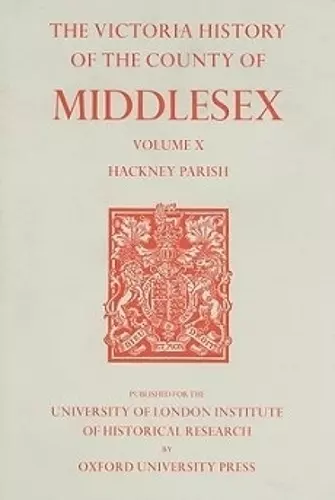A History of the County of Middlesex
Volume X: Hackney Parish
Format:Hardback
Publisher:Oxford University Press
Published:1st Jan '95
Currently unavailable, and unfortunately no date known when it will be back

This volume is the third to cover parts of Middlesex which lay from 1889 until 1965 within the county of London. It treats the history of Hackney, the largest parish transferred in 1889, which became a metropolitan borough with over 220,000 inhabitants before giving its name to a Greater London borough. The volume traces the origin of Hackney within the bishop of London's extensive Stepney manor, with medieval settlement round the church and at Dalston by the 13th century, and at Clapton and Homerton by the 14th. Hackney Wick and Shacklewell also had medieval origins. Before 1750 most people lived along Mare Street and its offshoots. London has been decisive, malting Hackney a desirable retreat, healthy but accessible, before turning it into a largely industrial suburb. Aldermen bought property there in the 13th century, as did Bank of England directors in the 18th. Nobles and courtiers abounded in Tudorand early Stuart times, when monarchs visited. Samuel Pepys admired girls at the fashionable schools and Daniel Defoe praised an opulence said in 1756 to sur-pass that of any village in the kingdom. The 18th century brought canals, rail-ways, factories, substantial villas, and jerry-built terraces for workers from the old East End. Britain's first plastics were made at Hackney Wick in the 1860s, and other products became household names. By 1901 south Hackney, with Shoreditch and Bethnal Green, formed the centre of London's clothing and furniture trades. The better off retreated northward. Their houses, if not subdivided, gave place to council estates, often for Londoners and forwhich more room was to be made by bombing. The population has shrunk over seventy years. Since 1945 Much heavy industry has left and immigrants have come mainly from the new Commonwealth, although Jews remain prominent around Stamford Hill. 'Gentrification', delayed by the widespread distribution of council estates and lack of an Underground rail-way, is bringing the refurbishment of older houses, often in the shadow of tower blocks which themselves areunder threat.
ISBN: 9780197227824
Dimensions: unknown
Weight: 1236g
235 pages